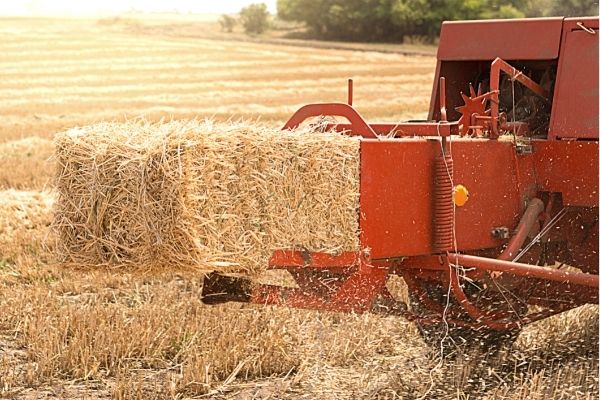You've probably noticed some hay formations on the side of the freeway while driving through the countryside. Some are square, some are round. Some people seem to think the hay bale's shape makes a significant difference. Others would claim there is absolutely no use-case distinction between a round hay bale and a square hay bale.
In truth, there is a difference between, but mostly in terms of their functionality and the machinery used to create them, not so in the nutrients present in the hay. Hay is still the same dried grass that is cut and stored for fodder, and the form of the bale doesn't alter the nutritional value of the hay.
They both have their pros and cons, which will be showcased shortly.
Square and Round Hay bales - An Overview
Hay bales were produced to simplify the animal feeding process. Back in the day, hay would be cut and stacked manually using rakes or forks, and the loose hay would be collected and stored in barns. In some U.S. regions, like the Iowa prairie, the stacks would be used additionally as animal housing. During the 18th century, several pieces of machinery were devised to cut grass, as well as for bundling, binding, and pressing hay. These machines naturally produced square bales, as they were designed to compress the hay into blocks, but the hay still had to be fed into the machines manually.

Square Hay Baler
The first full-fledged hay-baling machine would not come around until the middle of the 20th century. Round baler, originally designed by Ummo Luebben around 1910, would not be commercialized until the 1970s. The first modern-day round baler was manufactured by the Vermeer Company in 1971 (the 706 model). However, the 605A model launched a year later turned out to be more popular.
Some modern examples of round balers include John Deere's Zero and New Holland's RF series. Following the same concept as the round baler, by 1978, the first large square balers were beginning to see the light of day, starting with the Hesston 4800 model. To this day, both round and square balers are used, although round balers are more widespread. Examples of square balers available in the market include Case's LB 4 and Bamford's BL series.

Round Hay bailer
Difference Between Round and Square Hay Bales
Apart from the obvious shape distinctions, there are several pros and cons to both bale shapes. We'll be summarizing the common traits of each one, as well as their advantages and disadvantages.
Round Hay Bales
Round hay bales are commonly larger than square bales and regularly used for industrial purposes, so they would provide mass-produced fodder to bigger herds.
Weight: They're very heavy, usually reaching a weight of 1,700 lb. in a dimension of 5 ft x 6 ft.
Pros
Cons
Square Hay Bales
Square hay bales are the oldest bale form. They were initially knotted and bound manually using strings or twines.
Weight: They're regularly produced and sold in small sizes. Weighing around 50 lb. However, larger square bales can reach up to 1,580 lb.
Pros
Cons
Watch this small Massey Ferguson 4'X4' Round Baler in action
Best Baling Method for Dairy Farming
There is no cookie-cutter baling method that can apply to all cases and all circumstances. However, round bales present a more convenient alternative for dairy cattle feeding due to low production costs and the immediacy needed to feed big livestock, combined with the feeding capacity that these bales possess.
On the contrary, considering the average size and cost of square bales, you'll end up spending far more resources, adding into the equation all the disadvantages associated with hay preservation.
Sources:
- Comparison between round bales and square bales
https://www.hustlerequipment.com/2021/01/20/round-bales-vs-large-square-bales-what-shape-is-the-best-for-your-operation/?loc=es- "How Much Hay Does a Cow Eat?"
https://www.iamcountryside.com/cattle/hay-a-cow-eat/
